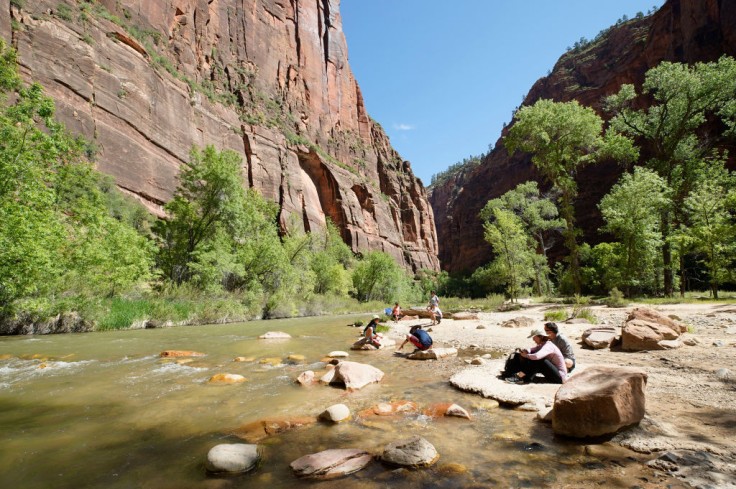
The National Park Service has issued a warning after detecting toxic cyanobacteria in multiple water bodies within Utah's picturesque Zion National Park.
As per the National Park Service, the presence of cyanotoxins in the North Fork of the Virgin River, North Creek, and La Verkin Creek has raised concerns among park officials and visitors alike.
Cyanobacteria, also known as blue-green algae, can pose serious health risks to humans and animals, prompting the NPS to advise against swimming or consuming water from the affected areas.
The alarming blooms are attributed to prolonged periods without floods, combined with the impact of climate change and pollution, allowing these dangerous bacteria to proliferate rapidly and unchecked.
The Dangers of Cyanobacteria and Their Effects on Health
Cyanobacteria, commonly found in ponds and lakes, are generally harmless. However, under favorable conditions, they can form large blooms that produce cyanotoxins, posing a significant threat to public health.
According to the Review-Journal, exposure to cyanotoxins can lead to various symptoms in humans, including irritation of the eyes, nose, throat, and skin, as well as more severe effects such as headaches, seizures, vomiting, and diarrhea.
For animals and pets, symptoms may include drooling, lethargy, loss of appetite, paralysis, and vomiting, which can sometimes prove fatal.
NPS Safety Advisory and Impact of Climate Change
In response to the detected cyanobacteria, the National Park Service has taken the necessary precautions to safeguard visitors. The NPS has prohibited swimming and submerging heads in affected Zion waterways and issued a warning against drinking water from any source within the park.
Popular destinations like The Narrows and Emerald Pools have also been included in the safety measures.
In cases of exposure, immediate medical attention is crucial, and individuals are advised to contact poison control or call 911.
Experts and researchers point to climate change and pollution as significant factors contributing to the proliferation of cyanobacteria.
According to NBC News, Ramesh Goel, a professor of civil and environmental engineering at the University of Utah, explained that human activities such as water pollution through nitrogen and phosphorus runoff from fertilizers and wastewater treatment plants create nutrient-rich environments that fuel the growth of blue-green algae.
Additionally, rising temperatures, possibly linked to climate change, provide ideal conditions for these bacteria to thrive and spread.
Read Also: Federal Judge Blocks Arkansas Law Criminalizing Librarians, Booksellers: ACLU Applauds Ruling
Cyanobacteria Growth and Impact on Water Quality
Cyanobacteria growth manifests differently depending on the body of water. Lakes and reservoirs may exhibit blue-green paint-like blooms on the water surface, while in rivers like the Virgin River in Utah, the bacteria often form on rocks, appearing as slimy mud. Surprisingly, even getting clothing wet in affected water can lead to exposure, emphasizing the need for caution.
David Stevens, a professor of civil and environmental engineering at Utah State University, highlighted the escalating presence of cyanotoxins due to increasing human settlements along lake shores and the discharge of septic systems into water bodies, leading to murky and algae-infested lakes. Livestock and wildlife waste can also contaminate water, contributing to the problem.
As cyanobacteria are ancient microorganisms that have survived under various conditions for millions of years, humans must take responsibility for creating conditions that do not foster toxic blooms.
Preserving water quality, preventing pollution, and minimizing the impact of climate change are crucial steps in safeguarding natural environments like Zion National Park.
By heeding the NPS's safety advisory and practicing responsible water management, visitors can continue to enjoy the beauty of Utah's wilderness while ensuring their well-being and the preservation of this cherished national park.